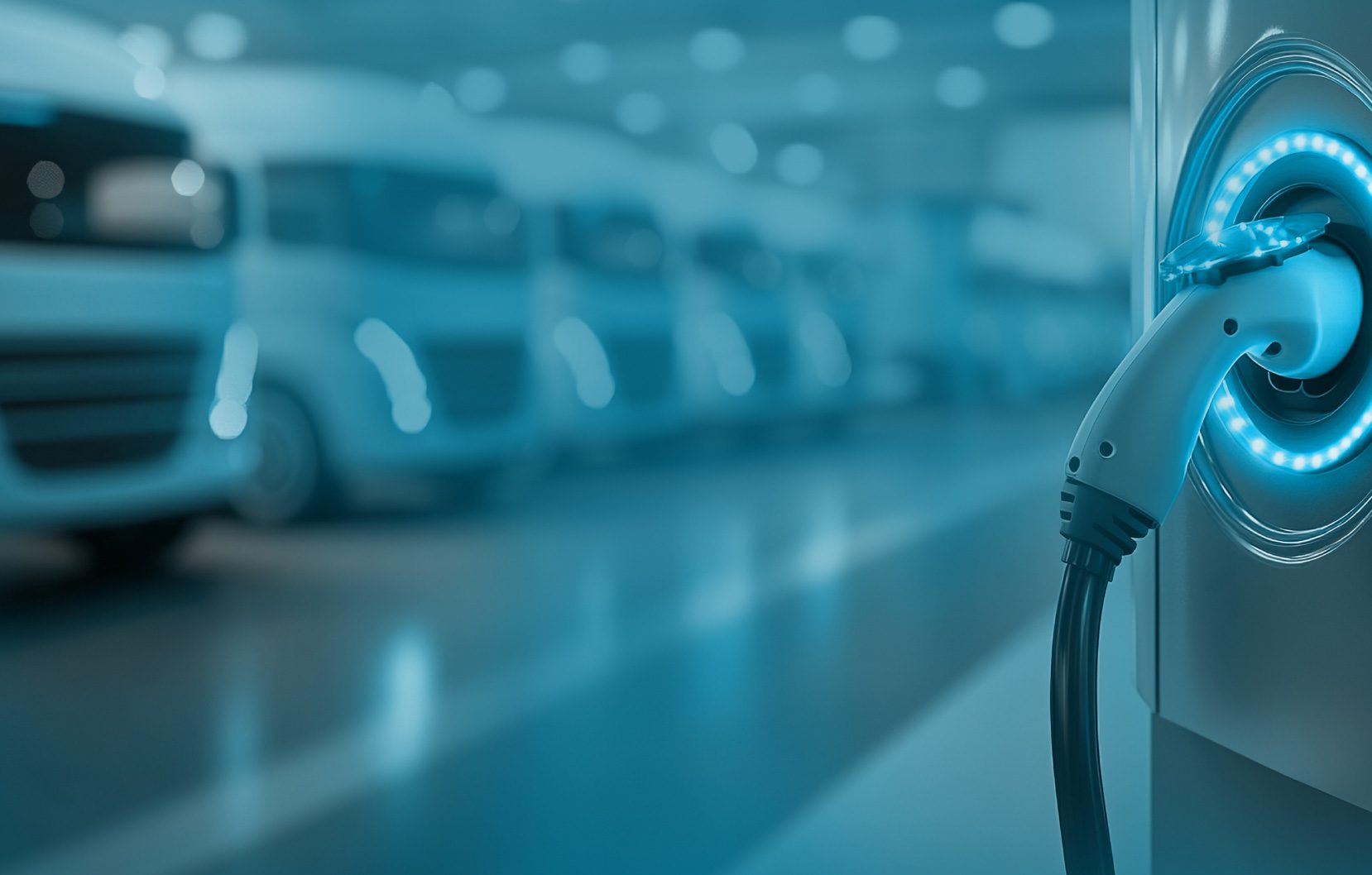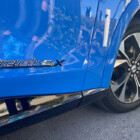Man, this car is an attention-getter! The Ford Mustang Mach-E has been drawing far more comments and questions from passers-by than any of the dozens of other plug-in vehicles I’ve evaluated, including the Porsche Taycan and several Teslas. As I’ve been driving it around town, at least a dozen people per day have asked me about it, snapped pictures, or just shouted “great car!” as they went by. Some were surprised to learn that it’s electric, but a surprising number knew exactly what it is.
The Mustang brand is one of the most popular in automotive history, at least in the US, and Ford made a powerful (if controversial) move when it put the pony on this electric crossover. The Mach-E has several other things going for it: it’s practical, it’s great to drive, and it’s comparatively affordable—at a starting MSRP of $42,895, it costs a little less than a Tesla Model Y ($48,990), and it’s far cheaper than electric SUVs from Jaguar and Audi. If (always a big if) Ford decides to market this new EV, it could have a hit on its hands that would leave big-talking GM in the dust.
One of my favorite aspects of the Mach-E is that it gives you a lot of control over the driving experience. There are three driving modes: Engage, Whisper and Unbridled—you just have to try them to figure out how they differ. You can also switch One-Pedal Driving on and off, so you have six options. My favorite was Whisper mode, in which the car coasts smoothly when you release the pedal. Personally, I’m not a fan of one-pedal driving, but many people are, and I think those folks will be very happy with Ford’s implementation.
I hardly need to add that, whichever mode you choose, the car drives great. There’s plenty of power (and I believe an even quicker version is in the pipeline), and it corners and holds the road like a champ (this is no top-heavy SUV). The lane-keeping function worked well—the car can pretty much drive itself on the highway, though it will remind you to keep your hands on the wheel.
Unfortunately, my week with the Mach-E was marred by several quality-control problems, and I couldn’t help but think about Ford’s history of boasting about its quality control (with an undercurrent of implicit criticism of Tesla). In the most recent salvo, a Ford exec told Autoblog, “The [Mach-E’s] doors fit properly, the plastics and other materials color-match, the bumpers don’t fall off, the roof doesn’t come off when you wash it, the door handles don’t get stuck in cold weather.”
I had no problem with the fit of the Mach-E’s doors, no parts fell off, and there are no door handles to get stuck (more on that below). However, the charging port door was dodgy, often requiring a dozen tries to get it to close, and at one point the touchscreen refused to work, which meant that the radio wouldn’t work, and the climate control was stuck on the setting it had been on before the screen went blank (after turning the car off and on several times, the screen returned to normal operation).
The most vexing problem actually proved to be educational. For some reason, the Mach-E simply wouldn’t work with my home charger, a ClipperCreek HCS-40 which I’ve used to charge a dozen different EV models, with never the slightest problem. The Mach-E either said “Vehicle Charge Fault” or simply “Plugged in Not Charging.” The tech support folks at ClipperCreek told me they weren’t aware of any issues with the Mach-E. The portable charger that comes with the car worked fine but (for reasons I won’t go into) plugging into a 240-volt outlet isn’t practical at my house, so I could only use Level 1 (120-volt) charging, which would take three days (yes, 72 hours!) to fully charge the pack.
I was now in the position of someone who doesn’t have the option of charging at home, and I set out, armed with half a dozen charging apps and a couple of RFID cards, to find a public charger. The first one I visited was out of order, the second didn’t exist (it appears on PlugShare, but not in meatspace—I suspect it’s a planned future site), the third wanted me to go through a complex process of downloading an app, logging in and prepaying for charging (patience was flagging at this point), and the fourth was located in an absurdly narrow parking space that would probably have been accessible to a smart car, but definitely not to the broad-shouldered Mach E. Finally, at the fifth site I visited (St Pete Beach City Hall) I found a Level 2 charger that was working.
Now I had established that the problem was the interaction between the Mach-E and my particular charger model, but I wasn’t interested in waiting around for a Level 2 charge, so I set off for downtown St Petersburg, where there are several DC fast chargers. The first of these that I tried worked fine, except that it inexplicably stopped charging every 8 minutes or so, so I had to unplug, replug and restart charging 4 times to get a fill-up (operator Greenlots is aware of the issue, and is “working on it”). The next one I tried, a brand-new Duke Energy/Greenlots rig at the brand-new St Petersburg Pier, worked great (albeit it at a mere 44 kW).
Mind you, none of these charging challenges were Ford’s fault. In fact, thanks to the FordPass Charging Network, I was able to charge for free at some chargers that would otherwise require payment. (The Mach-E also includes the new Plug and Charge feature, which eliminates the need for apps or cards, but it didn’t work at any of the stations I visited.) However, the moral of this story is one that Ford and every other automaker needs to be very aware of: depending on where you live, at the moment it is generally not practical to own an EV if you aren’t able to install a charger at home. I’ve delivered full-length rants on this topic elsewhere, so I’ll just make two observations here: the problem seems likely to disappear in a few years, once self-driving vehicles and wireless charging become common, but for now the only solution I can see is to roll out a lot more DC fast chargers.
The Mach-E’s user interface needs work. To me, the menus were not very intuitive, and it took me some time to figure out how to perform simple tasks such as setting the climate control the way I wanted it, or creating radio station presets. Puzzling error messages kept popping up, seemingly apropos of nothing. I don’t expect much from in-car navigation systems—the only time I use them is when I’m evaluating a new vehicle—so I wasn’t surprised to find the one in the Mach-E erratic. At one point, it kept insisting that I was a few miles away from where I actually was, and it told me that the Howard Frankland Bridge to Tampa was closed (which, fortunately, it was not). At other times, the nav worked fine.
It may seem silly to devote space to minor quibbles, but I believe the small details of human/car interaction can be important—some of these little joys/annoyances may end up being the deciding factor for a buyer who is having trouble deciding between two competing vehicles.
For better or for worse, the traditional door handle is becoming a thing of the past. The Mach-E’s doors have only little buttons to press, and that’s fine. What I didn’t dig was that, unlike most other cars that I’m familiar with, my Mach-E didn’t automatically unlock when you approach with the key fob in your pocket. In other words, you have to take out the fob and press the unlock button almost every single time you open the door. Some folks may like this feature, but personally I find it tedious.
Will the Mach-E buyer simply have to live with these wee botherations? Maybe not. The Mach-E is one of the first non-Tesla vehicles to feature over-the-air updates. CEO Jim Farley has said that Ford will use OTA updates to enable new features as well as to fix bugs. It’s quite possible that someday soon, the glitches will magically disappear, and unwanted/beloved features like the hyper-secure door locks will become user-selectable. The Mach-E’s UI is already more customizable than most—a lot of features, including some of the annoying pop-ups mentioned above, can be turned on and off if you take the time to explore the menus. And I must mention a welcome feature of the UI: a large physical knob at the bottom of the screen, which you can quickly grab to adjust the audio volume.
And now to my favorite hobby horse: cargo space. I need it, most EVs don’t have it, but the Mach-E does. This horsey can haul more than just ass. The rear cargo area has a flat platform with minimal liftover, and the back seats fold almost perfectly flat. Cubic footage is actually a bit larger than that of the Prius (the gold standard of small-car cargo capability), the rear opening is several inches wider, and under the rear platform there’s another usable compartment. The rear liftgate closes at the push of a button, and can be opened with a well-aimed foot under the bumper. There is also a frunk, though it isn’t very spacious.
My overall impression of the Mach-E is that Ford has a huge hit on its hands, if the company wants one. This is one of very few currently available EVs that I could see myself buying. Of course, I’m a highly unusual (not to say curmudgeonly) buyer—cargo space, efficiency and price are the biggies for me. Much more importantly, I can see a whole lot of other folks saddling up this stallion. Most buyers are interested in style, and as the public reaction to the Mach-E confirms, there’s nothing more stylish than a Mustang. Most buyers want to drive a crossover while dreaming of sports cars, and the Mach-E satisfies both cravings. The practicality and moderate price seal the deal.


























































































